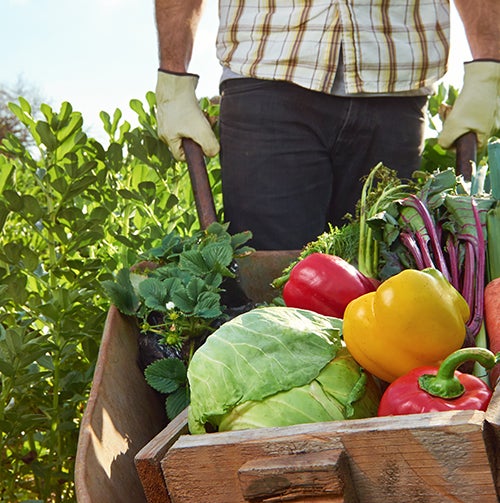Heading out the door? Read this article on the new Outside+ app available now on iOS devices for members! Download the app.
Eat clean and get lean with our dietitians, Erin Macdonald and Tiffani Bachus. Find out when their new course, A Whole-Life Guide to Lasting Weight Loss, launches. Register now!

Organic food has become very popular. In fact, it’s the fastest-growing sector in the global food industry. But what does “organic” mean and how do you know if the food you’re buying is organic? Organic poultry, meat, dairy and eggs come from animals that are not treated with growth hormones or antibiotics. Organic plant foods are grown without conventional pesticides and in safe soil – no GMO crops are allowed although cross contamination can occur. Organic produce can be identified by the number on its sticker – it will be a 5-digit number beginning in a “9.”
See also What is Organic Farming, Really?
On food packages, there are four levels of organic claims that can be made: “100% Organic” are foods that are completely organic or products made with 100% organic ingredients; “Organic” products contain at least 95% organic ingredients; “Made with Organic Ingredients” products contain at least 70% organic ingredients; and “Less Than 70% Organic Ingredients” are products that contain any amount of organic ingredients and can only mention the word “organic” in the ingredient list.
See also GMO Foods: It’s What We Don’t Know That Matters
Registered dietitians Tiffani Bachus and Erin Macdonald are the co-founders and creators of URockGirl.com, a website dedicated to promoting wellness and a healthy, balanced lifestyle.